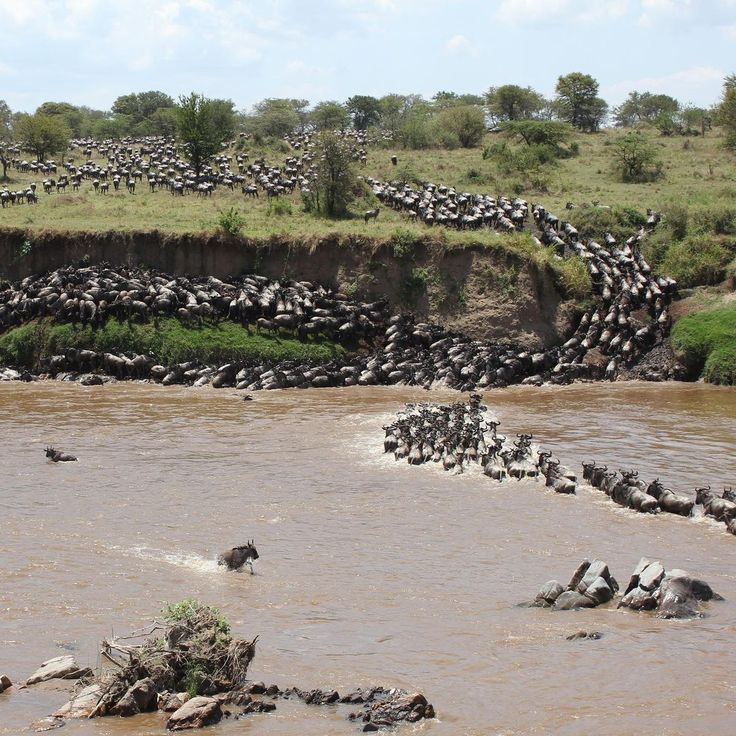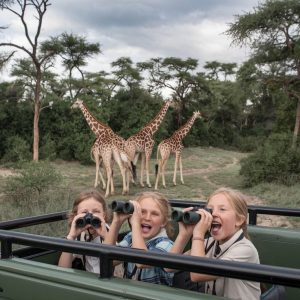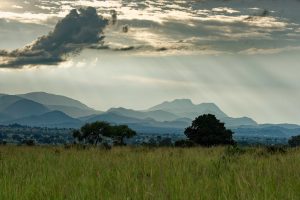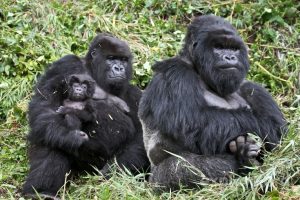A combined safari in Uganda and Kenya offers an extraordinary chance to witness two of Africa’s most iconic wildlife spectacles in one journey. Uganda is famed for its pristine rainforests and rare mountain gorillas, while Kenya is world-renowned for the Great Wildebeest Migration across the Masai Mara. Merging these destinations creates a unique safari that blends primate trekking with big game encounters, diverse landscapes, and unmatched photographic opportunities. Combining a Safari in Uganda with Kenya’s Great Migration
How can I combine a Kenya safari during the Great Migration with gorilla trekking in Uganda?
Combining the Great Migration in Kenya’s Masai Mara with gorilla trekking in Uganda requires strategic planning to maximize time and experiences. Most travelers begin with Kenya, arriving in Nairobi and transferring to the Masai Mara for game drives and migration viewing between July and October. After several days exploring the Mara, flights connect directly from Nairobi to Entebbe International Airport in Uganda. From Entebbe, domestic flights or scenic drives lead to Bwindi Impenetrable National Park or Mgahinga Gorilla National Park for gorilla trekking.
Some itineraries reverse the order, starting with gorilla trekking before heading to Kenya. Both options are viable, but many choose to begin with the high-adrenaline migration before slowing the pace for the intimate experience of tracking gorillas in lush forests. Combining a Safari in Uganda with Kenya’s Great Migration
When is the best time to plan a combined Kenya–Uganda safari?
The ideal time to combine these safaris is during overlapping dry seasons when wildlife viewing is at its best. For Kenya, the Great Migration peaks from July to October, with wildebeest river crossings creating dramatic predator-prey encounters. Uganda’s gorilla trekking is also most comfortable in the dry seasons of June to September and December to February, when forest trails are less muddy and access to gorilla families is easier. Combining a Safari in Uganda with Kenya’s Great Migration
A June to September itinerary captures the migration and favorable gorilla trekking conditions, making it the most popular window for this combination. Travelers should book flights, lodges, and especially gorilla permits several months in advance due to high demand during these months. Combining a Safari in Uganda with Kenya’s Great Migration
What does a sample combined itinerary look like?
A balanced combined safari can range from 6 to 12 days depending on budget and preferences. A typical 8-day itinerary may include:
- Days 1–3: Arrival in Nairobi and transfer to Masai Mara for daily game drives, focusing on migration herds, predators, and scenic landscapes.
- Day 4: Flight from Nairobi to Entebbe, Uganda, followed by transfer to Bwindi Impenetrable National Park.
- Day 5: Gorilla trekking in Bwindi, spending up to one hour observing a habituated gorilla family in their natural habitat.
- Day 6: Optional nature walks, Batwa cultural experience, or transfer to Queen Elizabeth National Park for tree-climbing lion sightings.
- Days 7–8: Return to Entebbe for departure or extension to Kibale National Park for chimpanzee tracking.
This structure ensures both wildlife spectacles are experienced without rushing, with time to appreciate the different ecosystems.
What wildlife highlights does each country offer on this combo safari?
A Uganda–Kenya combination offers unmatched biodiversity:
- Kenya: The Masai Mara is home to over 95 mammal species and 570 bird species. During the migration, over 1.5 million wildebeest, zebras, and gazelles move between the Serengeti and Mara, attracting lions, cheetahs, leopards, and hyenas. Elephant herds and giraffes roam year-round, and birdwatching is exceptional, especially after short rains.
- Uganda: Bwindi and Mgahinga protect half of the world’s remaining mountain gorillas. Kibale Forest is home to the highest density of chimpanzees in Africa. Queen Elizabeth National Park offers sightings of tree-climbing lions, hippos, and abundant birdlife, including the rare shoebill stork. Murchison Falls National Park adds Nile River safaris with elephants, buffalo, and crocodiles.
This diversity ensures each day brings new wildlife encounters across contrasting habitats.
What cultural experiences enrich the combined safari?
Cultural interactions add depth to wildlife adventures. In Kenya, visiting a Maasai village offers insights into traditional pastoralist life, distinctive dress, beadwork, and dance ceremonies. Travelers can also explore local markets or participate in guided nature walks with Maasai warriors.
In Uganda, the Batwa pygmies share their history as forest hunter-gatherers near Bwindi, offering music, dance, and storytelling experiences. Community tours also include visits to banana plantations, craft markets, and traditional homesteads. These cultural activities create a connection between conservation and community livelihoods, enhancing the safari’s meaning.
What logistical considerations are essential for planning this trip?
Planning a combined safari requires attention to transport, permits, and packing:
- Flights: Several airlines operate routes between Nairobi and Entebbe or Kigali, making cross-border travel smooth. Domestic flights within Uganda save time over long drives.
- Gorilla Permits: Each permit is limited and must be booked through the Uganda Wildlife Authority or tour operators. As of 2025, permits cost USD 800 for foreign non-residents.
- Packing: Bring lightweight clothing for warm savannahs and layers for cooler forest treks. Sturdy waterproof boots are essential for gorilla trekking, and neutral-colored clothing is recommended for game drives.
- Health & Entry: Yellow fever vaccination is required for both countries. Travelers should also carry malaria prophylaxis and be aware of visa requirements—some nationalities qualify for the East Africa Tourist Visa, which covers Kenya, Uganda, and Rwanda.
Why is combining these safari experiences worth it?
A combined Kenya–Uganda safari offers an unparalleled range of experiences in one trip. Few other itineraries allow travelers to witness both the drama of millions of wildebeest crossing predator-filled rivers and the quiet awe of locking eyes with a mountain gorilla. The contrast in landscapes—from the open plains of the Mara to the dense rainforests of Bwindi—creates a journey rich in variety and adventure.
This combination also delivers exceptional photographic opportunities, cultural enrichment, and a deeper appreciation for Africa’s ecosystems. By merging these destinations, travelers maximize value, time, and impact, supporting conservation efforts across two nations.
Final Thoughts
Combining Kenya’s Great Migration and Uganda’s gorilla trekking creates one of the most rewarding African safari experiences possible. The key to a successful trip is thoughtful planning—aligning travel dates with wildlife seasons, securing permits early, and balancing fast-paced game drives with slower, immersive forest treks. With expert guidance and preparation, this cross-border adventure will deliver encounters and memories that last a lifetime. Combining a Safari in Uganda with Kenya’s Great Migration




